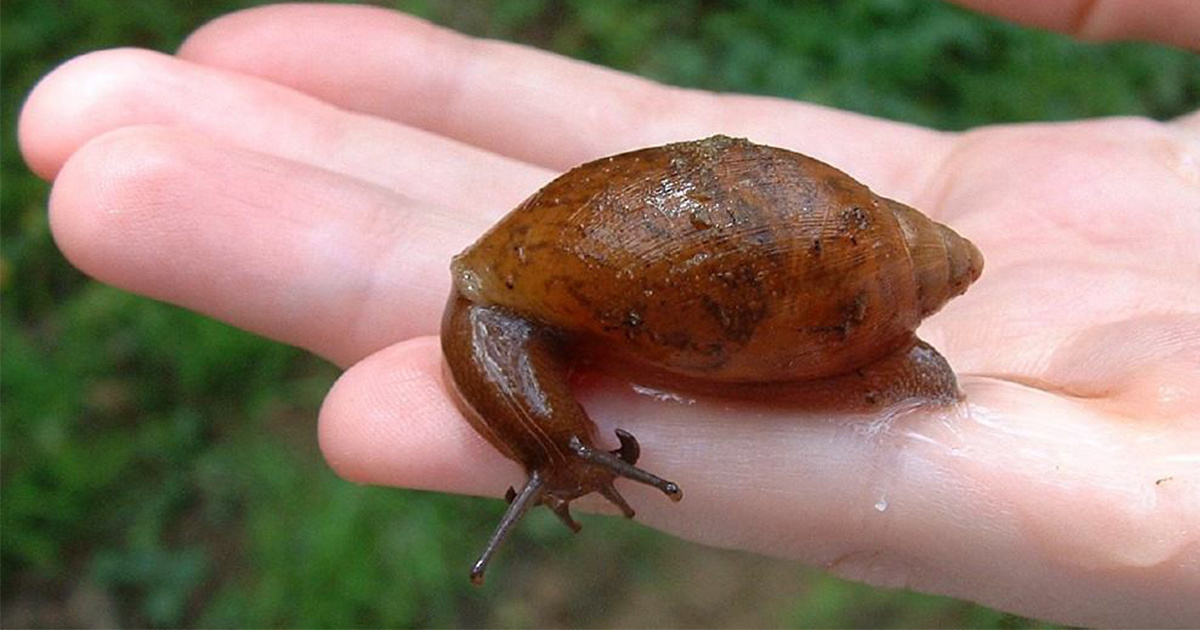
Invasive Species Have Led to a Third of Animal Extinctions Since 1500

The rosy wolfsnail has devastated native snail populations in the Pacific since it was introduced in the 1950s. Tim Ross
The introduction of invasive species has been the primary cause of plant and animal extinctions over the past 500 years, a new study from University College London’s (UCL) Center for Biodiversity and Environment Research found.
The study, published Monday in Frontiers in Ecology and the Environment, looked at 953 extinctions since 1500 and found that 126 of them, or 13 percent, had been caused entirely by alien species, while 300 were caused partly by the arrival of new species, according to a UCL press release published by EurekAlert!
“Some people have suggested that aliens are no more likely than native species to cause species to disappear in the current global extinction crisis, but our analysis shows that aliens are much more of a problem in this regard,” head researcher and UCL Biosciences professor Tim Blackburn said in the press release. “Our study provides a new line of evidence showing that the biogeographical origin of a species matters for its impacts. The invasion of an alien species is often enough to cause native species to go extinct, whereas we found no evidence for native species being the sole driver of extinction of other natives in any case.”
New @UCLCBER paper with @Celine_Bellard and @EcoInvasions published today comparing aliens and natives as drivers of recent extinctions, using @IUCNRedList.
TL:DR: aliens are associated with a lot more extinctions than natives. https://t.co/ZZBTcPfkWh
— Tim Blackburn (@TimBlackburn66) March 4, 2019
The researchers used data from the 2017 International Union for Conservation of Nature’s Red List, which lists species that have gone extinct and why. They found that invasive species were a factor in 33.4 percent of animal species extinctions and 25.5 percent of plant species extinctions. Native species, on the other hand, had caused relatively little harm, contributing to just 2.7 percent of animal extinctions and 4.6 percent of plant extinctions. Alien species were by far the greatest factor in animal extinctions, followed by biological resource use, like hunting and harvesting, which was the driver for 18.8 percent of extinctions.
The study also listed key examples of invasive species that had proved especially destructive, as iNews reported:
1. The rosy wolfsnail or ‘cannibal snail’: Introduced from the Southeast U.S. to islands around the Pacific, including Hawaii, to wipe out the African land snail in the 1950s, the snail has gone on to wipe out eight native Hawaiian snails and contribute to driving out dozens of snail species in the wider Pacific.
2. The black rat: The black rat has been spread around the world by boat and has led to the extinction of birds, mammals, reptiles and plants, especially on islands.
3. The red fox: When the British brought the red fox to Australia, it drove out several mammal species, including the lesser bilby.
4. Feral cats: The introduction of cats to New Zealand led to the extinction of the flightless Stephens Island wren as early as 1900.
5. The brown tree snake: When the snake was accidentally brought to Guam after the Second World War, it resulted in the loss of more than half of Guam’s bird and lizard species and two of three native bat species.
Earthworms may seem harmless, but they have the power to transform some of America’s forests—and not in a good way. #wildlife #biodiversity #invasivespecies https://t.co/uk0q54dSLc
— EcoWatch (@EcoWatch) March 2, 2019
- Climate Change and Invasive Milkweed Could Make Toxic Cocktail ...
- Don't Plant Mystery Seeds From China, Agriculture Authorities Warn - EcoWatch
- Are Species That Relocate Because of Climate Change Invasive?
- Florida Bans 16 Invasive Species, Including Popular Pets
- Florida Bans 16 Invasive Species, Including Popular Pets
- Invasive Emerald Ash Borers Destroy Millions of Trees — Scientists Seek to Control Them With Parasitic Wasps
- U.S. Declares 23 Species Extinct, Including Ivory-Billed Woodpecker - EcoWatch

 233k
233k  41k
41k  Subscribe
Subscribe 